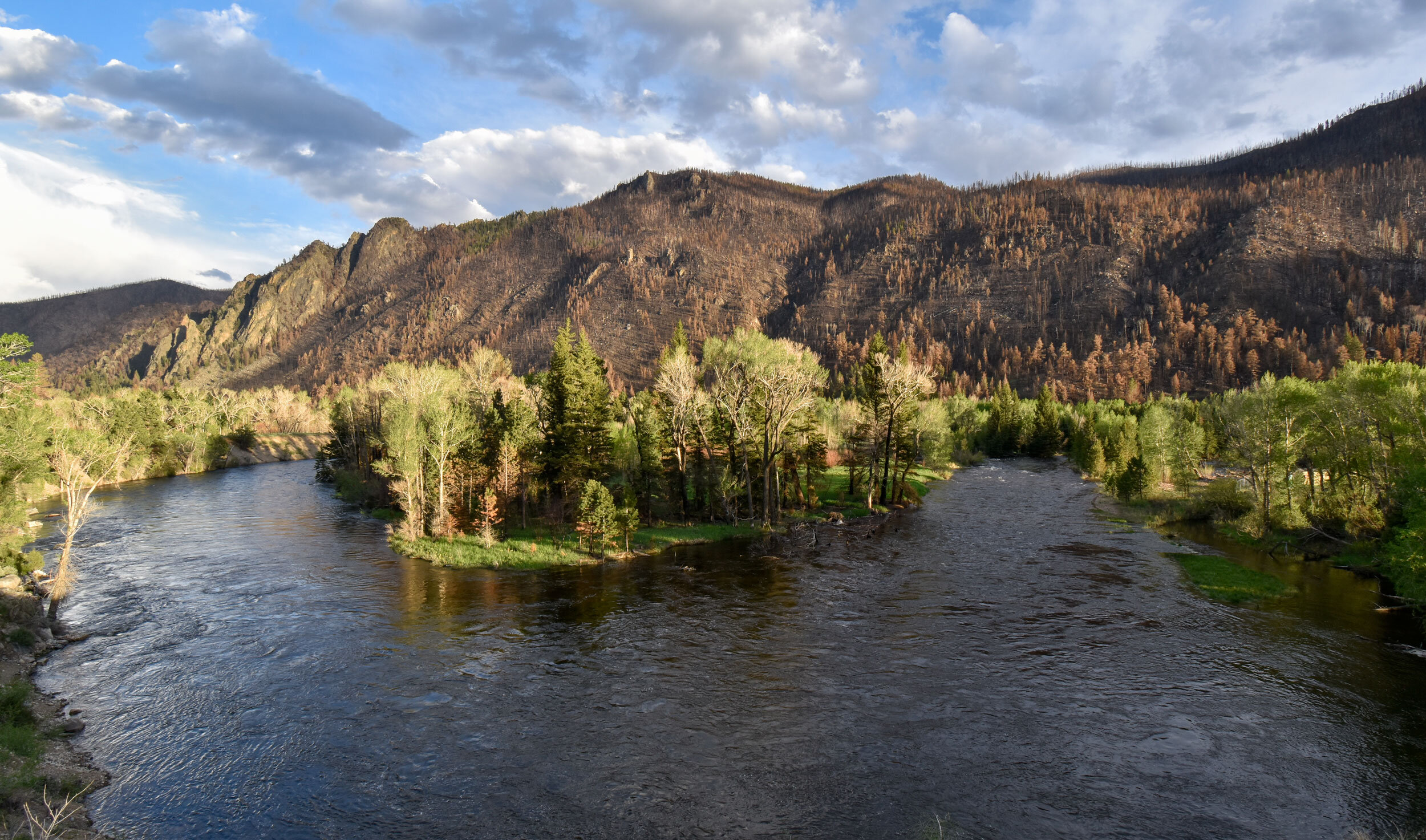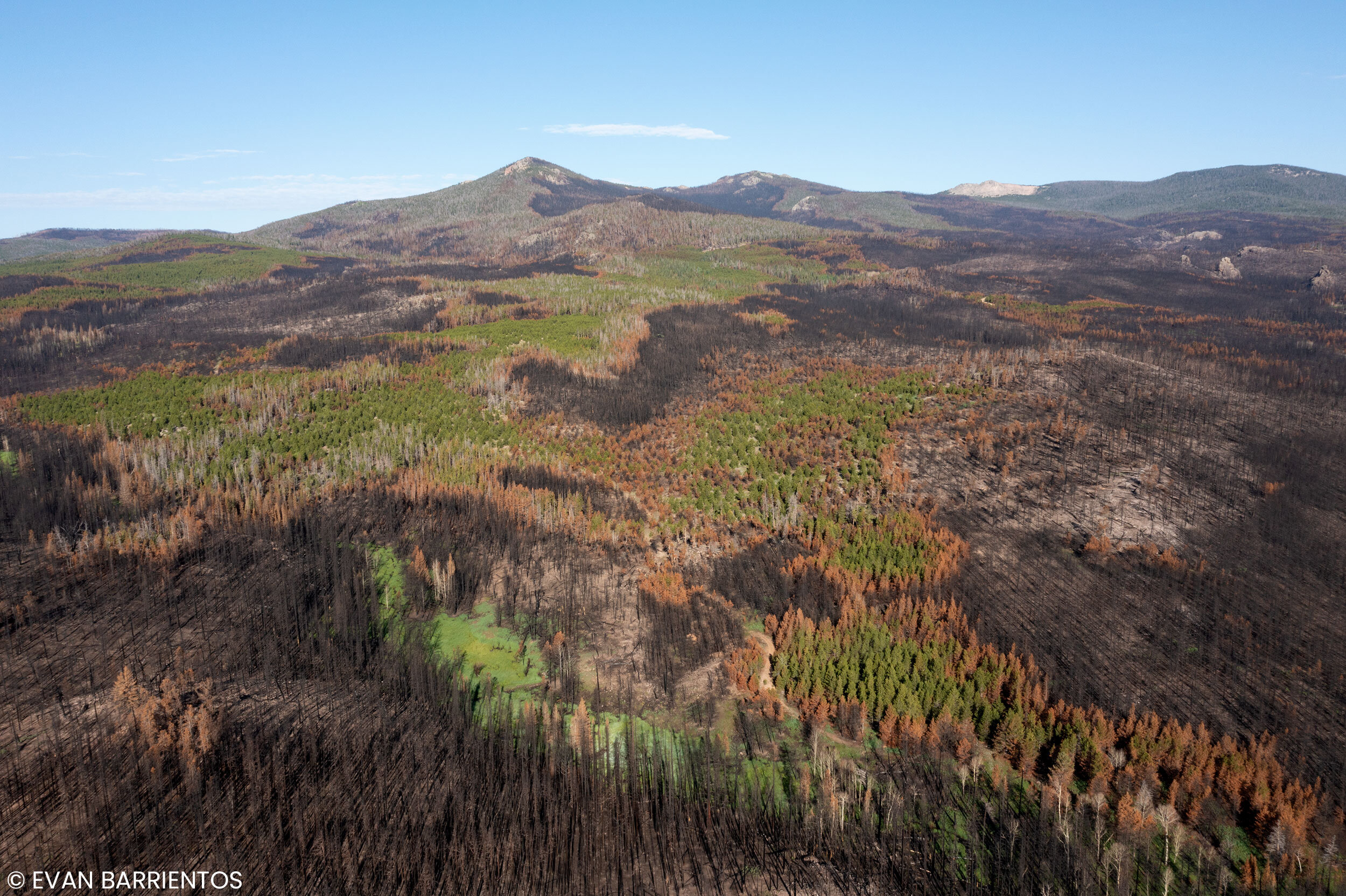
Photo Essay
“You only see the worst wildland fire on the news...Unless the culture can change—toward accepting fire as a beneficial partner and ally—then we’re not going to really win.”
When you hear “wildfire", what do you imagine? For many, it’s a blazing wall of flames or a blackened landscape of dead trees. News articles, television segments, and social media posts show the most severe fire effects almost exclusively. As a result, when people hear that the Cameron Peak Fire burned 208,000 acres, they assume that it left all 208,000 blackened and lifeless.
But fire does not equal destruction. Fire is a variable and natural part of Colorado’s forests. Within wildfires, there is a broad spectrum of fire intensity. Overlooked by the media, the low and moderately burned areas provide important benefits to forest health and wildfire risk reduction. On the landscape scale, fire can create a mosaic of burnt and unburnt areas. This patchwork plays a crucial role in preventing the spread of future megafires.
According to the U.S. Forest Service’s assessment of the Cameron Peak Fire, only six percent of the area burned at high severity. A combined 74% burned at low or moderate severity, and a shocking 20% percent was not burned at all.
Coverage of the Cameron Peak Fire has not reflected this nuance and complexity. For that reason, Fireforest is producing a photo essay that illustrates the true diversity of the Cameron Peak Fire’s effects. Fire is one of our most important tools for saving our forests, but we will only succeed in doing so if Coloradans understand that fire does not equal destruction.
The photo essay is currently in progress. The following photos are some of the highlights so far.
Explore Fireforest
-

About
Learn about the project’s objectives and the people behind it.
-

Timelapse
See how the forest and Poudre River respond to the Cameron Peak Fire in a long-term timelapse
-

Photo Monitoring
See how different types of forest respond to the Cameron Peak Fire in high detail.







